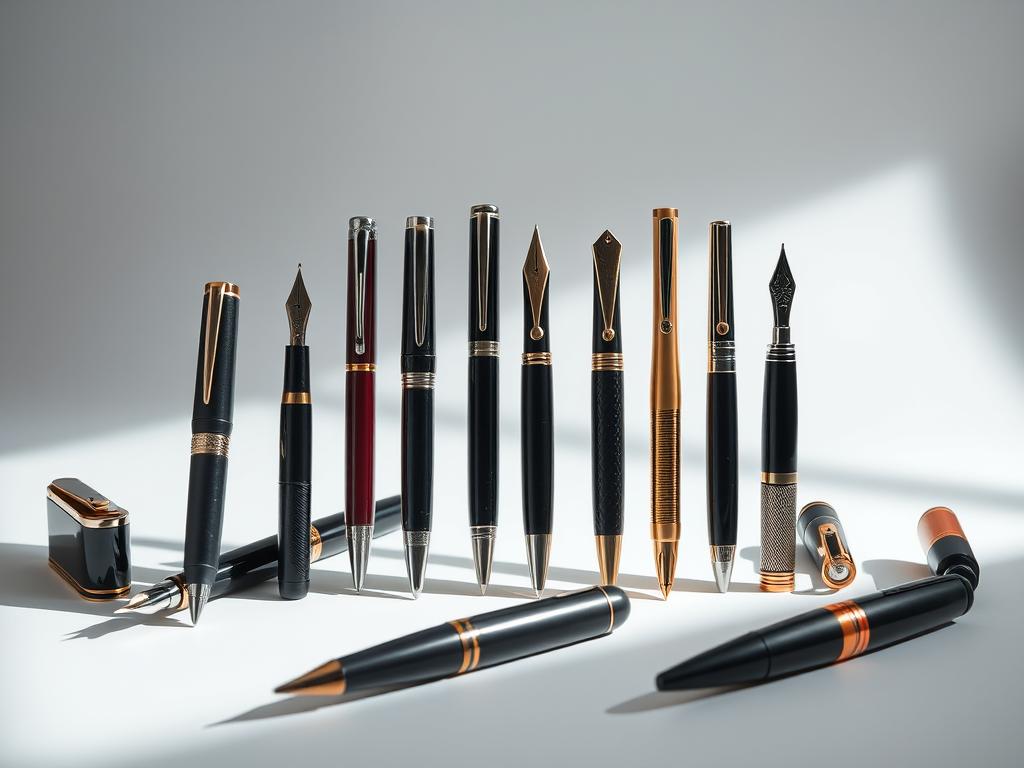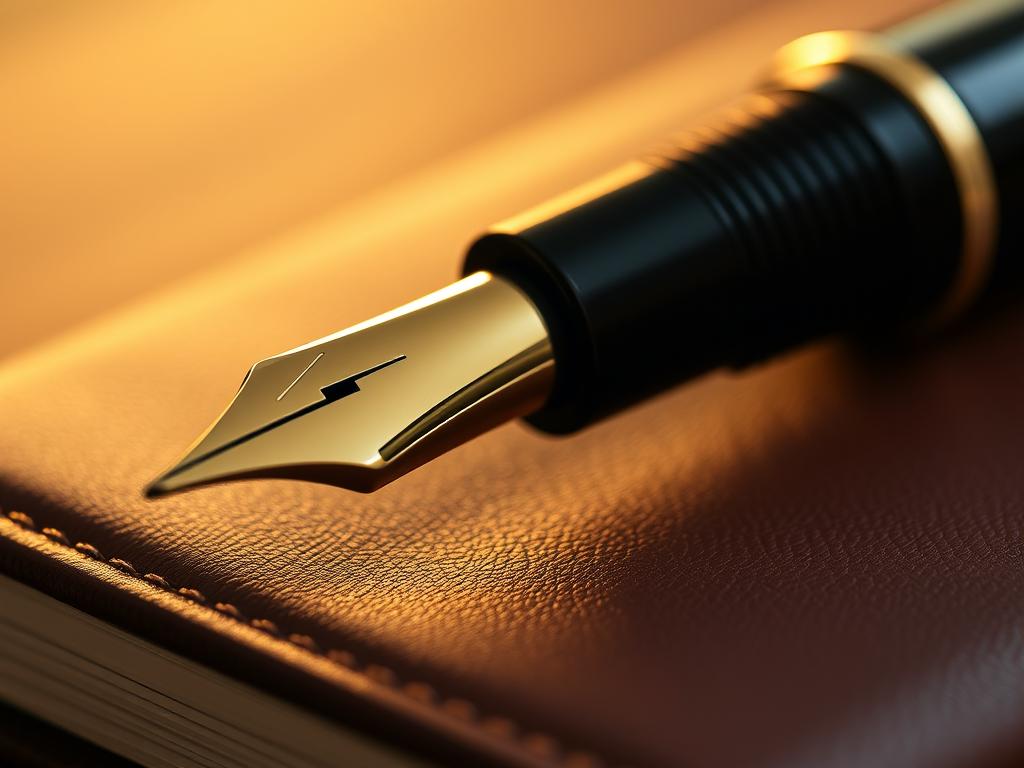For enthusiasts of fine stationery, exclusive writing tools represent more than just function—they embody artistry. Brands like Montblanc and Caran d’Ache craft instruments that merge Italian heritage with modern precision, turning each piece into a collectible masterpiece. These items often feature intricate designs, from hand-painted nibs to barrel engravings inspired by cultural milestones.
Collectors prize these creations for their rarity and storytelling. A Graf von Faber Castell or Nakaya fountain pen might showcase wheel press techniques perfected over generations, while Aurora models highlight vibrant color palettes. Many brands offer personalization, allowing owners to add monograms or select unique ink formulations.
This guide dives into what makes these products stand out. Readers will discover how brands like Waterman and Tibaldi balance tradition with innovation. Details about pricing tiers, material choices, and seasonal releases will help potential buyers navigate the market. Whether seeking a statement piece or a functional work of art, understanding these nuances ensures a rewarding experience.
Key Takeaways
- Exclusive writing instruments blend artistic design with historical craftsmanship
- Italian brands like Montegrappa lead in heritage-inspired creations
- Personalization options elevate the ownership experience
- Wheel press techniques ensure precise ink flow in fountain pens
- Seasonal color variations affect collectibility and value
Overview of Limited Edition Pens and Their Heritage
Writing instruments transformed into art began centuries ago when European artisans fused functionality with opulence. Brands like Montegrappa and Aurora preserved this legacy, blending wheel press techniques from Renaissance workshops with aerospace-grade materials. Their creations often mirror historical milestones—think Leonardo da Vinci’s notebooks reimagined in lacquered barrels or the Taj Mahal’s symmetry captured in gold nibs.
The Evolution of Exclusive Pens
Early 20th-century special editions emerged as symbols of status, celebrating events like royal coronations. By the 1980s, brands like Visconti began releasing edition 2025 prototypes, showcasing futurism through iridescent resins. Today’s releases honor cultural movements, such as Caran d’Ache’s Tour Eiffel design with laser-etched steel evoking Parisian ironwork.
Italian Craftsmanship and Unique Designs
Italy’s penmakers treat each fountain pen as a canvas. A single Graf von Faber Castell piece might take 18 months to craft, using 500-year-old engraving methods.
“Our workshop mirrors a Renaissance studio—every stroke tells a story,”
Vibrantcolorpalettes inspired by Venetian glass or Florentine textiles make these items instantly recognizable. Limited runs of 50-300 units ensure exclusivity, with prices reflecting meticulous labor and rare materials like celluloid from historic mills.
As demand grows for heirloom-quality pieces, modern brands balance tradition with innovation. The next section explores how today’s master craftsmen push boundaries while honoring their roots.
Key Features and Prestigious Pen Brands
The allure of exclusive writing instruments lies in their fusion of artistry and precision engineering. Master artisans blend rare materials with cutting-edge techniques, creating functional heirlooms that transcend ordinary stationery.

Innovative Craftsmanship and Quality Materials
Luxury pens often feature celluloid from historic Italian mills or Japanese urushi lacquer cured for months. Techniques like wheel press ink systems ensure flawless flow, while claim style finishes add textured elegance. For example, Graf von Faber Castell’s Perfect Pencil uses platinum-coated details, reflecting its 160-year legacy.
Spotlight on Renowned Brands
Caran d’Ache’s hexagonal “1010” model honors its 1915 heritage with rhodium-plated nibs. Montblanc’s Patron of Art series collaborates with living artists, embedding miniature sculptures in caps. Namiki crafts maki-e pens using 400-year-old techniques—each stroke of gold dust depicts cherry blossoms or mountainscapes.
Detailing Special Editions
Pilot’s Custom Urushi line features raden shell inlays resembling starlight. S.T. Dupont’s Olympio China Black edition uses 18-karat gold accents over Chinese lacquer. Limited runs, like Graf von Faber Castell’s annual 777-unit releases, often sell out within weeks.
| Brand | Special Edition | Key Material | Price Range |
|---|---|---|---|
| Montblanc | Patron of Art | Precious resin, gold | $1,200-$25,000 |
| Namiki | Emperor Maki-e | Urushi lacquer | $3,500-$50,000 |
| S.T. Dupont | Olympio China Black | Palladium, lacquer | $2,800-$8,500 |
Seasonal color variations, like Montegrappa’s emerald green 2025 prototypes, influence collectibility. As brands push boundaries with titanium nibs or magnetic caps, enthusiasts gain access to tools that double as wearable art.
Expert Tips for Buying Limited Edition Pens
Navigating the world of premium writing instruments requires strategy. Collectors should prioritize craftsmanship and storytelling value over trends, especially with brands releasing edition 2025 designs that blend innovation with tradition.

Considerations on Price, Color, and Limited Edition 2025 Releases
Prices often reflect materials and labor—think $1,200+ for Montblanc’s resin-and-gold pieces. Seasonal color variations, like Montegrappa’s emerald prototypes, can boost resale value. Newer releases, such as Graf von Faber Castell’s 777-unit series, often appreciate if they feature rare techniques like wheel press inks.
Insights on Exclusive Features
Personalization transforms tools into treasures. Brands like Caran d’Ache offer monogram engraving, while claim style finishes add texture. Always compare product specifications for details like nib size or ink compatibility.
Pro Tip: Verify same-day dispatch options for time-sensitive releases. Pair this with insured shipping to protect your investment.
Conclusion
In the realm of fine writing, each stroke tells a story of heritage and innovation. Brands like Montblanc and Namiki transform everyday tools into heirlooms, blending Italian craftsmanship with cutting-edge techniques. Their creations—whether a special edition inspired by cultural icons or edition 2025 prototypes—stand as testaments to artistry that spans generations.
When exploring these products, consider factors like price ranges and seasonal color variations. Personalization options, from monograms to claim style finishes, add unique character. Renowned makers ensure every fountain pen balances functionality with collectible appeal, making each item a conversation piece.
Ultimately, these instruments bridge past and present. They invite users to write not just with ink, but with passion. Whether drawn to Caran d’Ache’s precision or Montegrappa’s historical nods, collectors gain more than a tool—they hold a legacy.
FAQ
What makes exclusive writing instruments different from regular ones?
These items often showcase rare materials, intricate designs, and numbered production runs. Brands like Montblanc and Namiki blend artistic heritage with modern innovation, creating pieces that double as collectibles.
How can collectors verify the authenticity of a special-release fountain pen?
Authenticity cards, serial numbers, and certificates of origin are common markers. Purchasing from authorized retailers like Graf von Faber-Castell or S.T. Dupont ensures legitimacy and access to brand warranties.
Are there maintenance tips for preserving high-end fountain pens?
Regular cleaning with gentle solutions, proper storage in cases, and using compatible wheel press inks help maintain performance. Avoiding extreme temperatures also protects delicate nibs and finishes.
What customization options exist for personalized writing tools?
Some brands offer engraved initials, bespoke nib sizes, or custom lacquer colors. Caran d’Ache and Pilot, for example, provide tailored services for unique finishes or grip styles.
Do these products hold or increase in value over time?
Certain releases—especially those tied to anniversaries or collaborations—can appreciate. Limited quantities and iconic designs, like 2025 editions from top makers, often attract investor interest.
Where can enthusiasts find updates on upcoming launches?
Brand newsletters, official websites, and trusted retailers share advance notices. Subscribing to platforms like Pen World or Goldspot Pens ensures timely alerts for drops like the Edition 2025 collection.
Why do some inks perform better in premium fountain pens?
Specialty formulas, such as wheel press inks, resist clogging and offer vibrant saturation. They’re engineered to complement high-flow nibs, enhancing writing smoothness and longevity.


